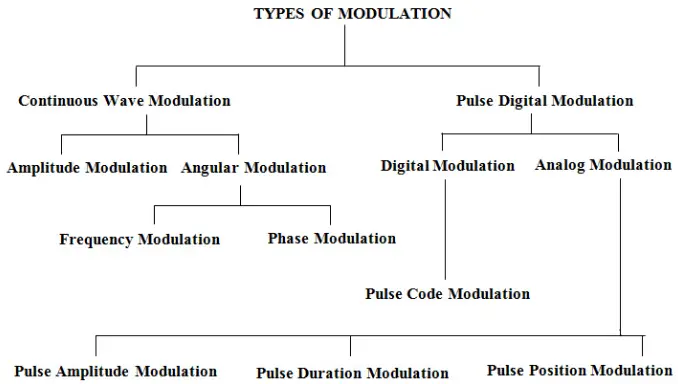Modulation
The term modulation means ‘to change‘ or ‘to modify‘. Modulation is the process of transmission of the information signal (low-frequency audio signal) using a high-frequency carrier signal. Modulation is the basic requirement for transmitting the message signal through free space.
Modulating Signal
The information bearing signal is called the modulating signal.
Modulated signal
The signal resulting from process of modulation is called as the modulated signal.
Types of Modulation

3. Pulse Amplitude Modulation (PAM)
4. Pulse Time Modulation (PWM, PPM, PFM)
5. Pulse Code Modulation (PCM)
Demodulation
Demodulation or detection is a process of recovering the original modulating signal from the modulated carrier wave i.e. the demodulation is a process reverse of the process of modulation.
The devices used for the modulation or detection are called demodulators or detectors. For Amplitude Modulation demodulators used are
- Square Law detector
- Envelope detector
- Transistor detectors
Amplitude Modulated signal with large carrier are detected by using the envelope detector. The envelope detector uses the circuit which extracts the envelope of the amplitude modulated wave. But a low level amplitude modulated signal can only be detected by using a Square Law detector. Envelope detector is most popular in commercial receiver circuit since it is very simple and is inexpensive, also at the same time, it provides satisfactory performance for the reception of the broadcast programs.

I think the admin of this web site is truly working hard in support of his website, as here every material is quality based material.